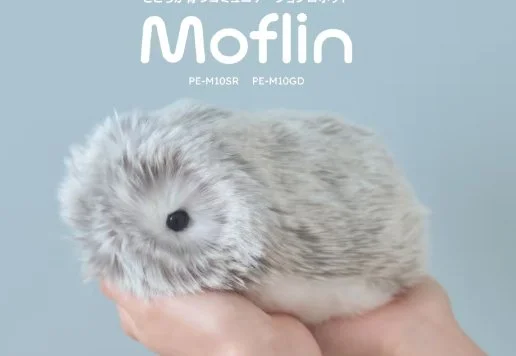The Psychoanalysis of Santa: Altruism, Archetypes, and the Weight of Global Expectations
Santa Claus looms large in the global imagination, a figure who transcends mere holiday cheer to symbolize altruism, morality, and cultural tradition. Yet beneath the surface of his jolly persona lies a rich tapestry of psychological and sociological significance. Santa embodies universal themes of generosity, responsibility, and the relentless pressure to meet impossible expectations, offering a lens through which to explore the complexities of the human psyche and societal dynamics.
This psychoanalytic analysis dives sled first into the layered identity of Santa, using Freudian, Jungian, and Lacanian frameworks to uncover the deeper truths behind his myth. From his archetypal roots to the psychological impact of magical thinking, and from ethical dilemmas to consumerism’s influence, Santa’s enduring relevance reveals humanity’s desires, fears, and collective aspirations.
Santa as an Altruistic Archetype
Freudian View: The Paternal Superego
In Freudian terms, Santa serves as a paternal figure embodying the superego, the moral compass of the psyche that enforces societal norms. His infamous "naughty or nice" list imposes a binary moral framework, compelling children to internalize values of kindness, generosity, and accountability. Like a father figure, Santa disciplines and rewards, shaping behavior through a combination of fear and love.
This dichotomy also reflects the tension between the id (impulsive desires) and the superego (moral ideals), with Santa acting as a mediator. His role encourages children to align their actions with ethical standards, fostering early psychological development rooted in societal values.
Jungian View: The Wise Old Man Archetype
From a Jungian perspective, Santa represents the Wise Old Man, an archetype symbolizing wisdom, guidance, and collective goodwill. This figure appears in myths worldwide, embodying humanity's longing for a benevolent mentor who provides reassurance amid uncertainty.
Santa’s enduring myth bridges generations, reinforcing a shared cultural continuity. His image taps into the collective unconscious, where archetypes like the Wise Old Man resonate universally. By aligning with this archetype, Santa becomes a timeless figure of guidance, offering children and adults alike a sense of stability in a changing world.
Cross-Cultural Parallels
Santa’s archetype transcends Western culture, with figures like Russia’s Ded Moroz, Italy’s Befana, and Japan’s Hotei embodying similar themes of generosity. These parallels underscore the universal admiration for altruism, suggesting that Santa’s myth serves as a cultural touchstone for humanity’s collective psyche, reflecting our intrinsic desire for selflessness and moral excellence.
Grand Gestures vs. Everyday Altruism
The Psychology of Grandiosity
Santa’s myth centres on a hyperbolic act of giving—delivering gifts to every child in a single night. In psychoanalytic terms, this grandiosity can be seen as a narcissistic defense mechanism, projecting societal anxieties about inadequacy onto a larger-than-life figure. By externalizing this perfection, Santa absorbs the pressure to embody boundless generosity, shielding individuals from the discomfort of their own limitations.
Reconciling Ego and Superego in Giving
Everyday acts of kindness, by contrast, reflect a more balanced relationship between the ego (the realistic self) and the superego (the idealized self). Celebrating these smaller gestures helps integrate the desire to give with the constraints of reality, fostering psychological health and reducing feelings of inadequacy. Cultural variations, like Befana’s modest gifts, highlight the quiet heroism of attainable altruism, challenging the myth of unattainable perfection.
Ethics Behind the Myth: The Helpers as Psychological Projections
The Elves: Shadows of Labour and Repressed Creativity
Santa’s industrious elves can be interpreted through Jungian theory as expressions of the shadow, representing the repressed aspects of the psyche—particularly the labor and sacrifice that Santa himself does not perform. Their cheerful servitude masks the hidden cost of productivity, mirroring societal tendencies to romanticize relentless work while ignoring its human toll.
Psychoanalysis reveals the elves’ role as a metaphor for subconscious guilt over exploitation and dependency. By reimagining them as empowered collaborators rather than subordinates, the myth could align with a healthier integration of the shadow self, promoting equity and creativity in collective narratives.
The Reindeer: Id and Nature in Harmony
Santa’s reindeer symbolize the id, the primal energy and instinctual drives harnessed to achieve extraordinary feats. Their magical abilities reflect humanity’s effort to channel raw instincts into socially beneficial outcomes. However, their portrayal as mere tools risks reinforcing outdated views of dominance over nature.
Reinterpreting the reindeer as companions who willingly participate in Santa’s mission aligns with modern values of respect for the natural world. Such a narrative fosters harmony between the id and the ego, emphasizing coexistence rather than exploitation.
The Burden of Global Expectations
Santa as the Ego Ideal
Freudian theory identifies Santa as a projection of the ego ideal—the aspirational self that embodies perfection. His flawless ability to deliver joy mirrors society’s impossible standards of performance, creating a figure who absorbs collective anxieties about failure and inadequacy.
This dynamic reflects the modern struggle with perfectionism and burnout, as individuals face relentless expectations to excel. Santa’s myth externalizes this pressure, offering a psychological buffer that both inspires and overwhelms.
Transference and Authority
Santa also functions as a transference object, onto whom children and adults project their unconscious longing for omnipotence and security. This role mirrors real-world authority figures, such as parents and leaders, who are expected to deliver without faltering. The psychoanalytic tension between dependency and autonomy plays out in these projections, revealing the delicate balance between inspiration and disillusionment.
Consumerism and Desire: The Commodification of Santa
Santa as the Objet Petit a
From a Lacanian perspective, the commercial Santa represents the objet petit a—the unattainable object of desire. His role in advertising and consumerism exploits humanity’s longing for fulfillment, driving material consumption as a substitute for emotional satisfaction.
The shift from Santa as a charitable figure to a commercial icon underscores a psychic split between the authentic self and the alienated self, perpetuating inner conflict between altruism and materialism.
Magical Thinking: Santa as a Transitional Object
The Role of Wonder
Santa’s magic fulfils a vital psychological role, offering children a transitional object that bridges their inner fantasies with external reality. This belief fosters cognitive and emotional development, providing a safe space for moral learning and imaginative growth.
For adults, Santa’s magic serves as a nostalgic return to innocence, offering a temporary escape from the constraints of rationality. This regressive longing underscores the enduring need for wonder in a world dominated by pragmatism.
Simply Put
Santa Claus is more than a festive figure; he is a profound psychological archetype embedded in the collective unconscious. Through Freudian, Jungian, and Lacanian lenses, his myth reveals humanity’s struggles with morality, perfectionism, and desire. By examining the dynamics of his helpers, his magic, and his commercialization, we uncover the interplay between the conscious and unconscious, tradition and modernity.
Reimagining Santa’s story to align with evolving values allows him to remain a symbol of generosity, wonder, and balance. As a cultural mirror, Santa challenges us to embrace imperfection, celebrate small acts of kindness, and find joy in giving—a message that resonates as deeply today as ever.
References & Further Reading
Disclaimer: Purchases through links on our site, may earn ourself affiliate commission.







